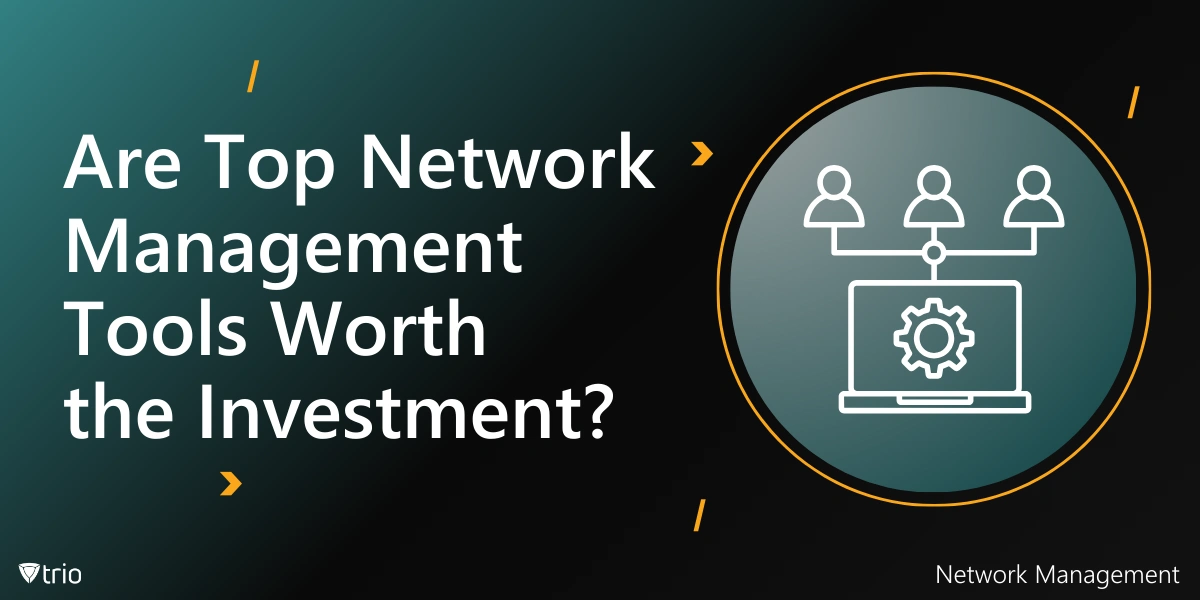Network management tools play a critical role in ensuring the seamless operation of modern IT infrastructures. As organizations increasingly rely on digital systems, the demand for robust network management solutions continues to grow. But are these high-end tools worth the often-substantial investment? Let’s delve into their value by analyzing key aspects of their functionality, cost-effectiveness, and long-term impact.
The Core Features of Top Network Management Tools
Top-tier network management tools offer a range of features designed to enhance network visibility, performance, and security. One of the most essential capabilities is comprehensive monitoring. These tools provide real-time insights into network traffic, device health, and overall performance metrics, allowing administrators to identify and address potential issues before they escalate into critical problems.
Another vital feature is automation. Advanced tools automate repetitive tasks such as configuration updates, patch management, and alert responses. This not only reduces the workload on IT teams but also minimizes the risk of human error, which is a common source of network vulnerabilities.
Scalability is another significant advantage. High-end tools are built to handle the demands of growing businesses, seamlessly integrating with additional devices, applications, and cloud environments. This ensures that the network remains efficient and secure as the organization expands.
Additionally, these tools often include advanced analytics powered by AI and machine learning. These features enable predictive maintenance and provide actionable insights to optimize network performance and prevent downtime. Tools like these can also include network segmentation capabilities.
Evaluating the Cost-Benefit Ratio
The initial investment in top network management tools can be substantial, but the long-term benefits often outweigh the costs. One of the primary advantages is improved productivity. By automating routine tasks and providing intuitive dashboards, these tools free up IT staff to focus on strategic initiatives, leading to higher overall efficiency.
Another benefit is the reduction in downtime. Network outages can result in significant financial losses and damage to an organization’s reputation. With advanced monitoring and predictive capabilities, these tools help prevent downtime by addressing issues proactively. This can lead to substantial cost savings over time.
The improved security offered by high-end tools also contributes to their value. Features like automated threat detection, access control, and compliance management reduce the risk of costly data breaches and regulatory penalties. These security measures are particularly crucial for organizations in highly regulated industries.
However, it’s important to weigh these benefits against the costs. Smaller organizations with simpler networks may not fully utilize the capabilities of premium tools, making more affordable solutions a better fit for their needs.
Potential Drawbacks and Considerations
Despite their many advantages, top network management tools are not without drawbacks. One of the primary concerns is cost. Licensing fees, training expenses, and ongoing maintenance can add up, making these tools a significant investment, especially for smaller businesses.
Another challenge is complexity. While these tools offer advanced features, they often come with steep learning curves. IT staff may require extensive training to utilize the tools effectively, which can be time-consuming and costly.
Integration with existing systems can also pose issues. Not all tools are compatible with every network architecture, and customizing them to fit unique requirements may involve additional costs and resources.
Lastly, the rapid pace of technological advancement means that today’s top tools and best practices may become outdated within a few years. Organizations must regularly evaluate their network management solutions to ensure they’re keeping pace with evolving demands and threats.
Top 5 Network Management Tools
Here are five top network management and network automation tools:
1. SolarWinds Network Performance Monitor (NPM)
SolarWinds NPM is a powerful and widely used network management tool that provides real-time visibility into network performance, helping IT teams detect and resolve issues quickly. It offers advanced features such as network device monitoring, fault detection, bandwidth analysis, and customizable alerts. With an intuitive dashboard and automated network mapping, NPM makes it easier for administrators to track network health and optimize performance.
2. Paessler PRTG Network Monitor
PRTG Network Monitor by Paessler is an all-in-one network monitoring solution that offers comprehensive insights into bandwidth usage, server health, and connected devices. It operates with a sensor-based approach, allowing IT admins to customize their monitoring needs while scaling efficiently. PRTG supports various protocols such as SNMP, NetFlow, and WMI, making it ideal for businesses of all sizes to ensure network reliability.
3. ManageEngine OpManager
ManageEngine OpManager is a robust network management solution that enables IT teams to monitor routers, switches, firewalls, servers, and virtual machines. It provides proactive fault detection, real-time performance analytics, and automated workflows for issue resolution. OpManager supports multi-vendor environments, ensuring compatibility with different hardware and software solutions, making it a versatile choice for IT administrators.
4. Nagios XI
Nagios XI is an enterprise-grade network monitoring tool that provides in-depth insights into network infrastructure, including applications, systems, and services. It features a powerful alerting system, capacity planning tools, and an extensive plugin ecosystem for customized monitoring. Nagios XI is particularly favored for its ability to detect network failures and security vulnerabilities before they impact business operations.
5. WhatsUp Gold
WhatsUp Gold by Progress is an intuitive network monitoring tool designed to help IT teams visualize, monitor, and manage network devices with ease. It offers real-time status tracking, automated discovery, and cloud-based monitoring capabilities. The tool also provides in-depth reports and dashboards, helping IT administrators maintain network performance and troubleshoot connectivity issues efficiently.

The Role of Mobile Device Management (MDM) in Network Management
Mobile Device Management (MDM) solutions are integral to modern network management, especially as the use of mobile devices in workplaces continues to rise. These tools provide IT administrators with centralized control over mobile endpoints, ensuring security and efficiency across the network.
One key benefit of MDM is enhanced security. By enforcing policies such as encryption, remote wipe, and app restrictions, MDM solutions help protect sensitive data on mobile devices. This reduces the risk of breaches and ensures compliance with industry regulations.
MDM also facilitates seamless integration with network management tools. By providing real-time visibility into mobile devices and their interactions with the network, administrators can identify potential vulnerabilities and mitigate risks effectively.
Furthermore, MDM supports productivity by enabling remote configuration and troubleshooting. IT teams can deploy updates, manage settings, and resolve issues without requiring physical access to the devices, saving time and resources.
Are They Worth the Investment?
Ultimately, the decision to invest in top network management tools depends on the organization’s specific needs, scale, and budget. For large enterprises or businesses in highly regulated industries, these tools are often indispensable. Their ability to enhance network performance, improve security, and support scalability justifies the investment.
Top network management tools can be a worthwhile investment, but their value is highly context-dependent. By thoroughly evaluating their features, costs, and potential ROI, organizations can make informed decisions that support their operational and strategic goals.
Discover how Trio’s advanced network management solutions can transform your IT operations. With cutting-edge features, seamless integration, and unparalleled security, Trio helps businesses of all sizes achieve peak network performance. Try out Trio’s free trial empower your team and future-proof your infrastructure.
Get Ahead of the Curve
Every organization today needs a solution to automate time-consuming tasks and strengthen security.
Without the right tools, manual processes drain resources and leave gaps in protection. Trio MDM is designed to solve this problem, automating key tasks, boosting security, and ensuring compliance with ease.
Don't let inefficiencies hold you back. Learn how Trio MDM can revolutionize your IT operations or request a free trial today!





